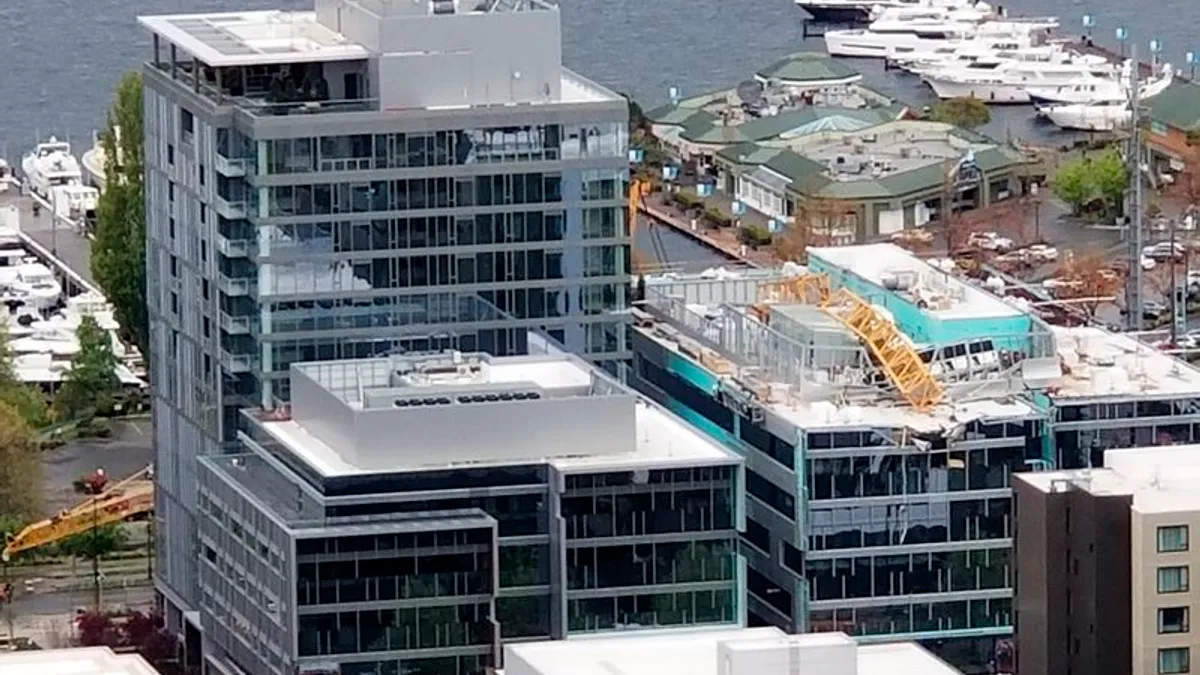Dive Brief:
- Experts have told The Seattle Times that the early removal of bolt or pins, part of the tower crane disassembly process at a Google campus construction site in Seattle, was likely the culprit in last month's deadly crane collapse.
- After watching a video and examining photos of the mast portion of the crane toppling onto the street below, the consultants and independent observers said it appears as if it came down in two-section pieces. This indicates, they said, that bolts, or pins, connecting the 20-foot segments were removed at every other section all the way down the mast. This practice of early bolt removal reportedly has become routine in the industry as a timesaver during crane disassembly.
- Even if this turns out to be the cause of the collapse, there is no indication as to who directed workers to remove the bolts. The Washington State Department of Labor & Industries is still investigating the incident.
Dive Insight:
The state L&I department is currently investigating what role five contractors played in the collapse — Bellevue, Washington-based general contractor GLY Construction; crane subcontractors Northwest Tower Crane Service and Omega Morgan; tower crane owner Morrow Equipment; and Woodinville, Washington-based Seaburg Construction Corp., which employed the operator of the crane prior to workers starting the dismantling process.
The scenario put forth by The Times’ article is the same one that caused a similar crane collapse in the Dallas area in 2012. Crews had removed and detorqued, or loosened, bolts from multiple vertical tower crane sections at once, which left the mast without enough support to withstand 36 mph gusts of wind. The upper tower sections collapsed onto a steel structure anchored to the roof, killing two workers.
There were also reported wind gusts in Seattle on the day of the collapse, but not at a strength that would have brought down a crane fortified with the required bolts, according to the experts cited by The Times.
Seattle DOT officials have also had to deal with questions about why traffic was allowed to move freely alongside the crane while it was being taken apart. The city does not have any requirements in that regard and closures related to construction are mostly left up to the contractor’s judgment. However, before the collapse, crane subcontractor Omega Morgan pulled permits that allowed the closure of two streets around the Google construction project, but those permits did not include the street onto which the crane fell.














